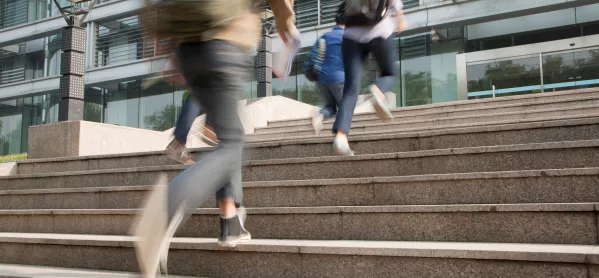Academies beat private schools in uni applications
Share
Academies beat private schools in uni applications
The proportion of young people successfully applying to higher education is higher from academies than from any other form of post-16 education.
Ucas data for the past decade, analysed exclusively by Tes, shows that of the 91,485 18- and 19 year-olds from academies who applied to higher education through Ucas for the first time by the 30 June deadline in 2018, 87.81 per cent were successful – more than from any other type of institution.
They were followed by students from sixth-form colleges, from which 87.61 per cent of the 66,080 applicants were successful. Both achieved a higher success rate than students from independent schools: 87.14 per cent of these 34,630 applications resulted in an acceptance.
The proportion of applicants who were successful was higher from further education colleges than from grammar schools, the data reveals.
Background: Colleges beat grammar schools for university offers
News: Scrap academies programme, says ex-DfE adviser
Admissions: Record number of students apply to university
Academies' university success
The figures cover theå whole of the UK and include applications to all higher education institutions registered with Ucas, including colleges, universities and other HE providers.
There has been a significant rise in the number of academies in recent years – supported by the Conservative government. For consistency, those institutions that were academies in 2018 are listed in the academies categories for the entire dataset by Ucas.
Leora Cruddas, chief executive of the Confederation of School Trusts (CST), the national organisation and sector body for school trusts in England, said the results demonstrated "the power of a group of schools working together in the interest of children and young people”.
“I think we will start to see more data showing that there is power in schools working together in this way,” she added.
Jonathan Simons, director of education at Public First, pointed out that the data for the academies line would include both converters – traditionally high-performing schools – and sponsored academies. “The former will mostly have high HE entry rates all the time but in recent years a lot of the sponsored academies will have improved rapidly under some of the big chains, and one of their main features is really increasing post-16 entry rates to university,” said Mr Simons. “The same is true for sixth-form colleges – that’s what they do – a narrow, highly academic curriculum focused on entry to HE.”
He added: “What needs to be disaggregated is how much of this is noise, how much of it is just general increases to HE over the period, which has disproportionately come from students with lower level 3 qualifications, and how much reflects a real shift in emphasis or performance by different types of providers. On balance, I think this mostly reflects where the widening participation money and focus of schools has been over the last decade, and so is good to see.”




